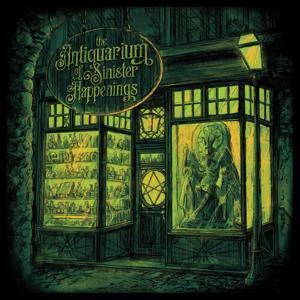“Practially every one of the top 40 records being played on every radio station in the United States is a communication to the children to take a trip, to cop out, to groove. The psychedelic jackets on the record albums have their own hidden symbols and messages as well as the lyrics to all the top rock songs and they all sing the same refrain: its fun to take a trip, put acid in your veins.”
Art Linkletter
************************************************************************
“Mother” by Lynette Mejia
This story is a PseudoPod Original.
Lynette Mejía writes science fiction, fantasy, and horror prose and poetry from the middle of a deep, dark forest in the wilds of southern Louisiana. You can find her online at www.lynettemejia.com .
Your reader – Setsu Uzume spent her formative years in and out of dojos. She also trained in a monastery in rural China, studying Daoism and swordplay. She is a member of Codex and SFWA. While she has dabbled in many arts, only writing and martial arts seem to have stuck. You can find her on the web at katanapen.wordpress.com, and on Twitter @KatanaPen.
Lucinda sniffed the air, wrinkling her nose. Another smoker, she thought, though the sign on the door was as clear as could be: a circle with a burning cigarette in its center, bisected by a thick, black line. The smell was faintly industrial, like burning chemicals. Annoying.
She lugged the heavy commercial vacuum cleaner into the room, plugging it into the nearest wall outlet and dragging it back and forth across the floor in a series of ever-widening, slightly overlapping strokes. As it slid beneath the bed, however, the ancient machine coughed and heaved, gasping like an end-stage emphysema patient. Turning it off with a sigh, Lucinda dropped to her knees and lifted the scratchy, floral coverlet hanging nearly to the floor.
***************************************************************************
“Darwinism” by Rachel Verkade
“Darwinism” was originally published in issue 19 of 69 Flavors of Paranoia. “I never had a gender in mind for either the narrator or the listener. Does it change the story a great deal if the narrator in particular is male or female?”
Rachel is a Canadian writer whose background is in wildlife biology. Previously she’s been published in The Escapist, The Future Fire, 69 Flavors of Paranoia, Under the Bed, The New Accelerator, Romance Magazine, 365 Tomorrows, and On the Premises. Currently she lives in England with 3 cats, a parrot, and a husband. She works as a writer and editor for the website Nerds Raging under the pseudonym “Here be Dragons” or “The Drunken Dragon Lady”. She’s working on an ongoing comedic review of the works of John Everson, titled “Rape-Rape, the Rapening”
Your reader – Andrea Subissati is the co-host of the Faculty of Horror podcast, a monthly show examining the academic side of horror movies. The Faculty of Horror can be found at http://www.facultyofhorror.com, as well as on Facebook (http://www.facebook.com/TheFacultyOfHorror) and Twitter (http://twitter.com/FacultyofHorror).
Come here a moment. I want to talk to you about evolution.
Don’t be shy. It’s not that scary a subject, no matter what your local priest might tell you. It’s really very simple. The idea is that some creatures are born with “mutations”; new features that can be detrimental or advantageous to the animal. Say, for example, that at one time an antelope gives birth to a calf that has a slightly longer neck than its fellows. And because that calf has a longer neck, it is able to reach leaves that are higher in the trees. These leaves are more succulent, richer, and it does not have to fight with its herdmates to reach them. And so this animal has an easier time finding food, and thus becomes stronger and is better equipped to breed with the females. This long neck is passed on to its progeny, and each of them can reach these[...]





























